Have you ever stopped to think about your eyes? Not just admire them in selfies, but really wonder how they work? These two tiny orbs tucked inside your skull do something magical every waking moment—they decode the world around you at lightning speed!
Let’s dive into the eye, not literally (eww!), and understand how vision really works, in a way that’s more fun than your biology class ever was!
Your Eyes: Nature’s Tiny Cameras
Think of your eyes as super high-tech cameras. And guess what? You’ve got two of them, giving you a fabulous wide-angle, 3D view of the world. Not even the fanciest smartphone can beat that!
Here’s a quick breakdown of the parts:
- Cornea: This is the transparent front part of your eye. It’s the doorman—first to greet light and help it enter your eye.
- Pupil & Iris: The pupil is the black circle in the middle, and the iris is the coloured bit. They work together like a camera’s aperture, adjusting how much light comes in.
- Lens: Behind the pupil is your eye’s built-in zoom lens. It flexes to focus on things near or far. Multitasking at its best!
- Retina: The retina is like a screen at the back of your eye. It receives the image and sends it to your brain through the optic nerve. This is where the magic happens!
Fun Fact: What you “see” isn’t actually your eyes doing the seeing—it’s your brain interpreting the signals your eyes send. Vision is literally brain work!
From Light to Sight: How Vision Works
Here’s a fun analogy: Imagine you’re watching a movie in a theatre.
- Light bounces off everything around you—say, a dog in a superhero costume.
- That light enters your eye, gets bent (or refracted) by the cornea and lens.
- The image is projected onto your retina (upside down!).
- The retina’s special cells—rods and cones—convert the light into electrical signals.
- These signals take the optic nerve express train straight to the brain.
- Your brain flips the image, processes colors, shapes, and movement—and voilà! You see the pup in a cape zooming by.
Honestly, it’s like having a 24×7 in-house film crew in your head. Only without the popcorn.
Color, Light & Night Sight
Your eye has two main kinds of photoreceptor cells:
- Cones: These love the spotlight. They work best in bright light and help you see color. We have 3 types for red, green, and blue.
- Rods: These are the night owls. They help you see in dim light, but everything looks like a black-and-white movie.
This is why you can’t see colors clearly in the dark, but can still spot your cat sneaking onto the kitchen counter!
Why Do Eyes Sometimes Need Help?
Sometimes, the eye’s lens or shape doesn’t focus light correctly on the retina. That’s when you need a little help from glasses, contact lenses, or even vision therapy.
- Myopia (Nearsightedness): You see near objects clearly, but faraway things? Not so much. Like trying to spot a friend across the mall without glasses—“Is that Priya or a mannequin?”
- Hyperopia (Farsightedness): The reverse. Reading the menu feels like solving a puzzle.
- Astigmatism: Your eye is shaped more like a rugby ball than a football. Blurry vision all around.
No worries—optometrists have your back (and your front, quite literally).
Eat Your Way to Better Vision
Mom was right! Carrots are good for your eyes, but they’re not the only stars. Foods rich in vitamin A, C, E, and zinc help keep those peepers sharp. Add spinach, eggs, fish, and nuts to the list and your eyes will thank you!
Also, water. Hydrated eyes are happy eyes.
Screen Time, Blink Time!
With all the screen-staring we do these days, don’t forget to blink—like, on purpose. Blinking refreshes your eyes, so give them that spa moment every now and then. And follow the 20-20-20 rule: Every 20 minutes, look 20 feet away for 20 seconds.
Your eyes aren’t made of pixels—give them a break!
Final Vision
Your eyes are more than windows to your soul—they’re powerful tools that give meaning to everything around you. So cherish them, pamper them, get them checked regularly, and be amazed at just how awesome vision really is.
Now go out there and see the world with fresh appreciation! And maybe… give your optometrist a high five next time.
